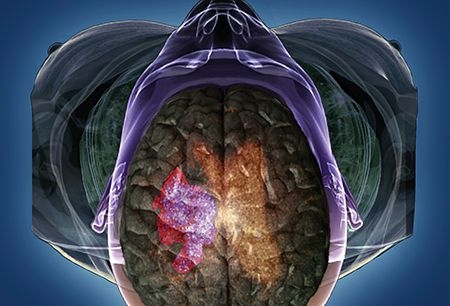Non-alcoholic fatty liver disease (NAFLD) is currently the most common cause of abnormal liver function tests. Current advice is simply to monitor patients’ liver function, but is this really correct? And how do we identify and manage people at risk of developing NAFLD?
Obesity: The harsh reality and new solutions
Practice nurses are in the frontline of the fight against obesity, yet they face a moving target. Around 10 years ago, the ‘centre ground’ of the battle comprised patients with around 10 kg to lose; today, it is 20 kg. This has profound implications for weight management and a range of related conditions, but recent research is highlighting new solutions for this group of patients.
Why and when to test for potassium
The World Health Organization has recommended that everyone should be eating more foods that contain potassium, and we routinely measure this electrolyte as part of the standard U&Es blood test. But why is potassium important for our health, and why do we need to worry if a patient’s levels are too high or too low?
Ensuring the safe use of insulin in diabetes
Insulin therapy is life-saving for people with type 1 diabetes, and a key component of the treatment regimen for many people with type 2 diabetes. At the same time, insulin is a major cause of adverse drug events, some of which are so severe that they cause emergency admission to hospital. There is therefore much that needs to be done to improve the safe use of insulin in order to reduce medication errors and hospitalisation associated with hypoglycaemia.
The impact of the NHS Health Check: Asking the right questions
A recent study concluded that in general practices providing NHS Health Checks, the change in reported prevalence of diabetes, hypertension, coronary heart disease (CHD) and chronic kidney disease (CKD) does not differ from practices that provide usual care. Although the study was not randomised and was not powered to support this conclusion, it is of interest because it raises a number of important questions about the delivery of the NHS Health Check.
Flu jabs: Why you should be the first person on your list
The 2013 measles epidemic in Wales came as a salutary reminder of the importance of immunisation in preventing communicable diseases. Similarly, it took an outbreak of bird flu in 2010 to act as a wake-up call for people who had become somewhat laissez-faire about protecting themselves against the influenza virus. In this article we look at the dangers of flu, why the immunisation programme is important, and what you can do to reduce the impact of the flu bug on your patients’ health and well-being.
CVD mortality: A retrospective audit of disease registers
A retrospective audit of premature deaths (aged under 75) from cardiovascular disease (CVD) in Leeds showed that patients diagnosed with CVD and placed on disease registers lived on average eight years longer than patients who had not been diagnosed prior to their deaths. If innovations like the NHS Health Check can be used to identify CVD patients in a more equitable manner, there is likely to be a major impact in reducing premature mortality with the potential to reduce health inequalities for disadvantaged groups in the population.
Why do we need new options for managing FH?
In patients with both homozygous and heterozygous familial hypercholesterolaemia (FH), statins with or without ezetimibe are now the mainstay pharmacological therapy for lowering low-density lipoprotein cholesterol (LDL-C) levels, combined with lipoprotein apheresis in homozygotes and statin-refractory heterozygotes. These therapies have helped to improve outcomes, but new treatment options areurgently needed, as FH patients continue to be at high risk of premature death due to cardiovascular disease (CVD).
HEART UK – The Cholesterol Charity – has provided editorial support and review of this sponsored FH series.This article was made possible by an unrestricted educational grant by Sanofi, who had no control over content.
Caring for patients following PCI and stents
Most people with coronary heart disease (CHD) can be managed with lifestyle change and optimal medical therapy, but some patients need revascularisation procedures such as angioplasty with stenting (percutaneous coronary intervention [PCI]). These patients spend minimal time in hospital, and GPs have an increasingly important role in follow-up to minimise the risk of adverse events, promote lifestyle change and ensure continuing adherence to medication.
Patient perspectives on AF management: high satisfaction, but could do better
Patient satisfaction with treatment is a key component of the successful management of chronic conditions such as atrial fibrillation (AF). In the EUropean Patient Survey in Atrial Fibrillation (EUPS-AF) survey, UK patients reported the highest rates of satisfaction with their healthcare system and quality of care. However, only about half of UK patients reported receiving regular anticoagulation testing and about one third had never or rarely had a medication review. This survey provides important insights into the current provision of care that should be taken into account when designing and commissioning patient-centred AF services.
Let’s talk about sex to men with diabetes
Erectile dysfunction (ED) is three to four times more common in men with diabetes, and 20% have the condition at diagnosis. ED is a marker for heart disease, and men themselves value the opportunity to discuss their sexual problems with a health professional. The annual diabetes review offers the opportunity to identify and treat these men. Some practice nurses may find this task daunting, but treatment of ED can help to improve a man’s wellbeing and reduce his cardiovascular risk.
Using NOACs for stroke prevention in atrial fibrillation
Warfarin is highly effective in preventing strokes in people with atrial fibrillation (AF), but has its limitations. Only half of patients who could benefit actually receive warfarin, resulting in an estimated 7000 avoidable strokes each year.





















